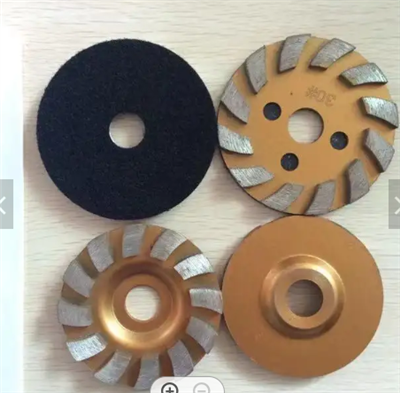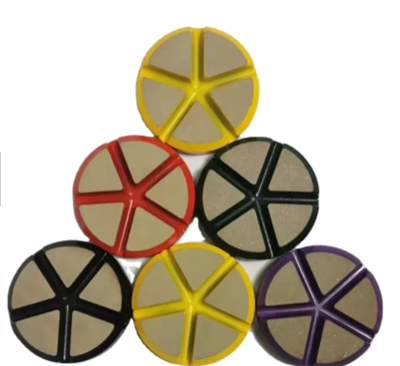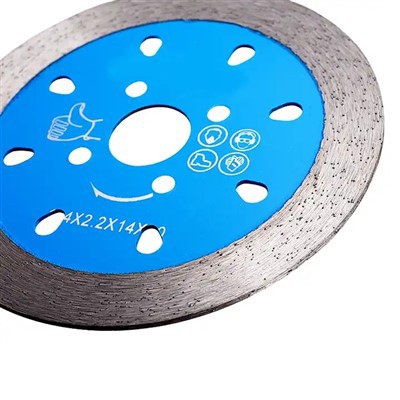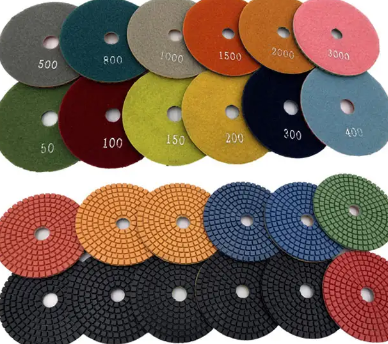Why Choose Us ?
Customized services
We understand that each customer has unique manufacturing needs. That's why we offer customization options, to cater to your specific requirements.
Advanced equipment
A machine, tool or instrument designed with advanced technology and functionality to perform highly specific tasks with greater precision, efficiency and reliability.
High quality
Our products are *manufactured* to very high standards, using the finest materials and manufacturing processe.
Competitive price
We offer a higher-quality product or service at an equivalent price. As a result, we have a growing and loyal customer base.
Product Categories
What is a Saw Blade?
A saw blade is a circular cutting tool used for cutting through various types of materials, including wood, metal, plastic, and other materials. It typically consists of a circular metal disc with teeth or cutting edges on the outer edge, which attach to a saw machine, such as a circular saw or table saw. The size, shape, and number of teeth on a saw blade can vary depending on the material being cut and the desired cut quality.
Benefits of Saw Blade
Precise Cuts
Saw blades are designed for precision cutting, which is essential in many applications. With the right saw blade, you can make straight and accurate cuts.
Fast Cutting Speed
Saw blades are designed for high-speed cutting, which can save you time and effort. They can make quick work of tough materials like metal, wood, and concrete.
Long-lasting
Many saw blades are made from durable materials like carbide and diamond. These materials can last a long time, which means you won't have to replace your saw blade as frequently.
Versatile
Saw blades come in a variety of shapes and sizes. This means they can be used for a wide range of cutting tasks and on different types of materials.
Improved Finish
Saw blades can help improve the finish of your cuts. They can leave smooth edges and reduce the need for additional finishing work.
Reduced Waste
Saw blades can be designed to minimize waste, which can save you money and improve your efficiency. They can cut through materials more efficiently, leaving less waste behind.
Types of Saw Blade
Standard circular saw blades
Standard circular saw blades are perfect for cutting hardwood & wood composites. The blade tooth helps to determine the rotating speed, and finishing cut. A circular saw blade with less tooth perform faster cutting, and a blade with more tooth provides a better finish.
Rip-cut & cross-cut blades
Rip-cut wood grain cutting blades (along the length of a board) have fewer teeth, usually 16 to 40. The teeth are designed to cut aggressively, and effective chip removal is provided by deep gullets. Made for cutting through the wood grain (across the face of a board), the cross-cut blades are between 40 and 80 teeth long and are built for clean cutting. The teeth are separated by smaller gullets.
Continuous-rim blades
Continuous-rim blades are a kind of diamond-edged blade designed for use on materials such as tile and slate (sometimes called diamond blades). Diamonds attached to the blade's edge cut through the material. Continuous-rim blades provide a very clean finish. Some operate only in dry-cutting applications, some are for wet-cutting applications and some can operate in any application.
Turbo-rim blades
They are similar to continuous-rim blades. Turbo-rim blades are diamond blades that have a serrated rim that cuts materials such as brick and concrete. These blades cut more powerfully than continuous-rim blades but don't leave as clean of a finish. Some work only for dry-cutting, while others are ideal for both wet and dry applications.
Segmented blades
Segmented blades are often cut with diamond tips, but have a rim identical to those on a regular blade separated by gullets. The segments produce the diamond blades' most violent cut.
Abrasive blades
Abrasive blades are used to cut hard materials such as concrete and stone. Like a metal-cutting 7 1/4 saw blade, some abrasive blades are acceptable. They don't have teeth, like the blades of diamonds. They are cut with an abrasive material such as aluminum oxide or carbide silicon.
Crosscutting blades
Crosscutting blades are perfect for cutting hard and softwood materials, and sheets. Especially in comparison to other circular blades, these blades have more teeth and a gullet that is shallow, so they are best for wood cutting. Crosscutting blades provide a smooth and clean cut at a slow speed.
Plywood blade
The plywood blade has more teeth than the crosscutting blade since the plywood flakes and chips are not rough. They usually have more than 40 teeth. The blade is intended to be used on smooth surfaces, thereby helping to minimize wood splintering during cutting.
General-purpose blades
General-purpose blades are also known as combination blades, they somehow placed between crosscut and rip cut blades. As we have already discussed crosscut and rip cut blades in this article.
Ripping blades
These blades are not designed to cut through a grain of the wood, but along with it. A few teeth, not more than 24, are distinguished by them. They have deep gullets and are ideal for the faster development of rough cuts.
Application of Saw Blade
Woodworking
Covering 30+ industries such as real estate , finance , manufacturing,Internet,etc., it has accumulated 1,800 + well-known enterprise practice cases.
Metalworking
Saw blades are used to cut various metals, including aluminum, copper, brass, and steel. They come in various sizes and tooth counts, depending on the thickness of the metal being cut.
Masonry
Saw blades are used to cut concrete, brick, and stone. They are specially designed to cut through tough and abrasive materials.
Ceramic and Tile Cutting
Diamond saw blades are designed for cutting through ceramic, porcelain, and other types of tiles. They can be used with handheld machines or stationary saws.
Plumbing and Pipe Cutting
Saw blades are used to cut pipes made from different materials, including PVC, copper, and steel. Stainless steel and abrasive blades work well for cutting through tough materials.
Automotive Repairs
Saw blades are used in auto body shops to cut through metal panels, exhaust pipes, and other parts of a vehicle. They can be used with a sawzall or a metal cutting saw.
Electrical Wiring
Saw blades are used to cut through different types of conduit and wiring. They can also be used to create holes for switches and outlets.
Glass Cutting
Saw blades with diamond tips are used to cut glass for various applications such as windows, doors, mirrors, and decorative glass.
Material of Saw Blade
High-speed steel (HSS)
This is a popular material for saw blades because it is tough, durable, and resistant to heat. HSS blades are commonly used for cutting metal and wood.
Carbide-tipped
These blades are made from high-carbon steel with a carbide tip that is extremely hard and long-lasting. They are ideal for cutting hard materials such as metal, ceramics, and stone.
Diamond
Saw blades with diamond edges are used for cutting hard materials such as glass, tile, and ceramics. They are extremely durable and can maintain their sharpness for a long time.
Bi-metal
These blades are made from two different types of metal, typically high-speed steel and a high-carbon steel. Bi-metal blades are ideal for cutting a variety of materials, including wood, metal, and plastic.
Carbon steel
Saw blades made from carbon steel are inexpensive and widely available. However, they are not as durable as other types of blades and tend to become dull quickly.
Ceramic
Saw blades made from ceramic are very hard and durable, making them ideal for cutting hard materials such as tile and stone. However, they are expensive and can be fragile if not handled carefully.
Components of Saw Blade
Blade body:It is the main part of a saw blade. It can be made of different materials like high-carbon steel, alloy steel, stainless steel, or carbide tipped steel.
Teeth:The cutting edges of the blade are called teeth. They are responsible for cutting through the material being sawed.
Gullet:The space between the teeth is called the gullet. It helps in removing the material that is being cut.
Kerf:It is the width of the cut made by the blade. It is determined by the thickness of the blade body and the set of the teeth.
Tooth set:It is the angle at which the teeth are bent outwards from the blade body. It helps in clearing the material being cut and reducing friction.
Blade coating:Some blades are coated with materials like carbide, diamond, or ceramic for added durability and precision.
Arbor hole:It is the hole in the center of the blade that mounts onto the saw machine's arbor.
Expansion slot:It is a slot in the blade body that allows for expansion and contraction during use, preventing warping or cracking of the blade.

Factors to Consider When Selecting Saw Blade
Diameter:This is measured from the furthest edge of one tip to the furthest edge of the tip directly opposite. Use the saw diameter the machine was designed for. Even if the material being cut doesn't require the depth of cut you will get from the proper size blade, you want the rim speed attained by a full diameter blade.
Tooth count:The basic rule is the more teeth the finer the cut, but you also have to consider the thickness of the cut and the feed rate. Fine tooth saws tend to leave a smoother finish because each tooth takes a smaller bite, however, if the material is too thick, or if it is being fed at a high rate, the gullet capacity of fine-tooth blades is too small. (The gullet is the open space between the teeth and inadequate gullet capacity will cause burning, poor quality cut, and possibly heat damage to the blade.) Conversely, not enough teeth will cut aggressively, at lower feed, or on thinner materials and leave a rougher finish.
Tooth style:These generally fall into three categories: Square Top style – rip saw, for downgrain cutting of solid wood; Alternate Top Bevel (ATB) style – cut-off saw, for crossgrain cutting; and Triple Chip style – primarily for composite panel.
There Also Are Specialty Blades For Specific Applications, Including: Thin kerf/thin rim saws, chip limiter rip saws, double-end tenon saws, negative hook saws, hollow ground/face saws, high ATB (Alternate Top Bevel) and Alternate Face Bevel Blades, used in composite board applications where surface chipping is a problem.
What You Should Know When Use Saw Blade
Types of Saw Blades:There are different types of saw blades for various kinds of applications. These include circular saw blades, reciprocating saw blades, jigsaw blades, and band saw blades. Make sure you have the correct blade for the job.
Blade Size:Ensure that you select the correct blade size. This will depend on the type of saw you are using.
Material:Choose a blade that is designed for the material you are cutting. For example, blades for cutting wood are different from those for cutting metal.
Blade Quality:Invest in high-quality saw blades as they will perform better and last longer.
Blade Teeth:The number of teeth on a saw blade will determine the type of cut you will make. Blades with fewer teeth will cut faster but produce a rougher finish. Conversely, blades with more teeth will create a smoother finish but cut slower.
Blade Maintenance:Keep your saw blade clean and sharp. Blunt blades can cause kickback, which is a safety hazard.
Safety:Wear protective gear such as eye protection and gloves when using saw blades. Follow the manufacturer's recommended safety precautions.
How to Maintain Saw Blade
Clean the saw blade regularly
After every use, clean the blade with a soft brush or cloth to remove any sawdust, resin or other debris that may have accumulated on it.
Use the right blade for the job
Using the wrong blade for the job can cause the teeth on the blade to wear down quickly and can even damage the blade. Always choose the blade that is suitable for the material you are cutting.
Store saw blades properly
When not in use, store saw blades in a dry and clean place. Use protective covers or cases to prevent any damage or corrosion.
Keep the blade teeth sharp
A dull blade can be dangerous and can cause the motor to work harder. To keep the blade teeth sharp, use a sharpening stone or take the blade to a professional sharpening service.
Lubricate the blade
Apply some lubricant before each use to reduce friction and help the blade cut smoothly.
Check the blade for cracks or defects
Regularly inspect the blade for any cracks or defects that may have occurred during use. Replace the blade immediately if it appears to be damaged in any way.
Certifications

Our Factory
Our company has been committed to the international development in stone industry since its establishment 2016.All our abrasive products are made with quality materials and exceed ANSI and EU European Standards.We trust in delivering high-quality products to the end-user. Customer satisfaction is the lifeline of our quality.




Frequently Asked Questions Saw Blade
As one of the leading saw blade manufacturers and suppliers in China, we warmly welcome you to wholesale discount saw blade made in China here from our factory. All our products are with high quality and competitive price.
brush cutter saw blade, atb blade, lapidary rock saw


















